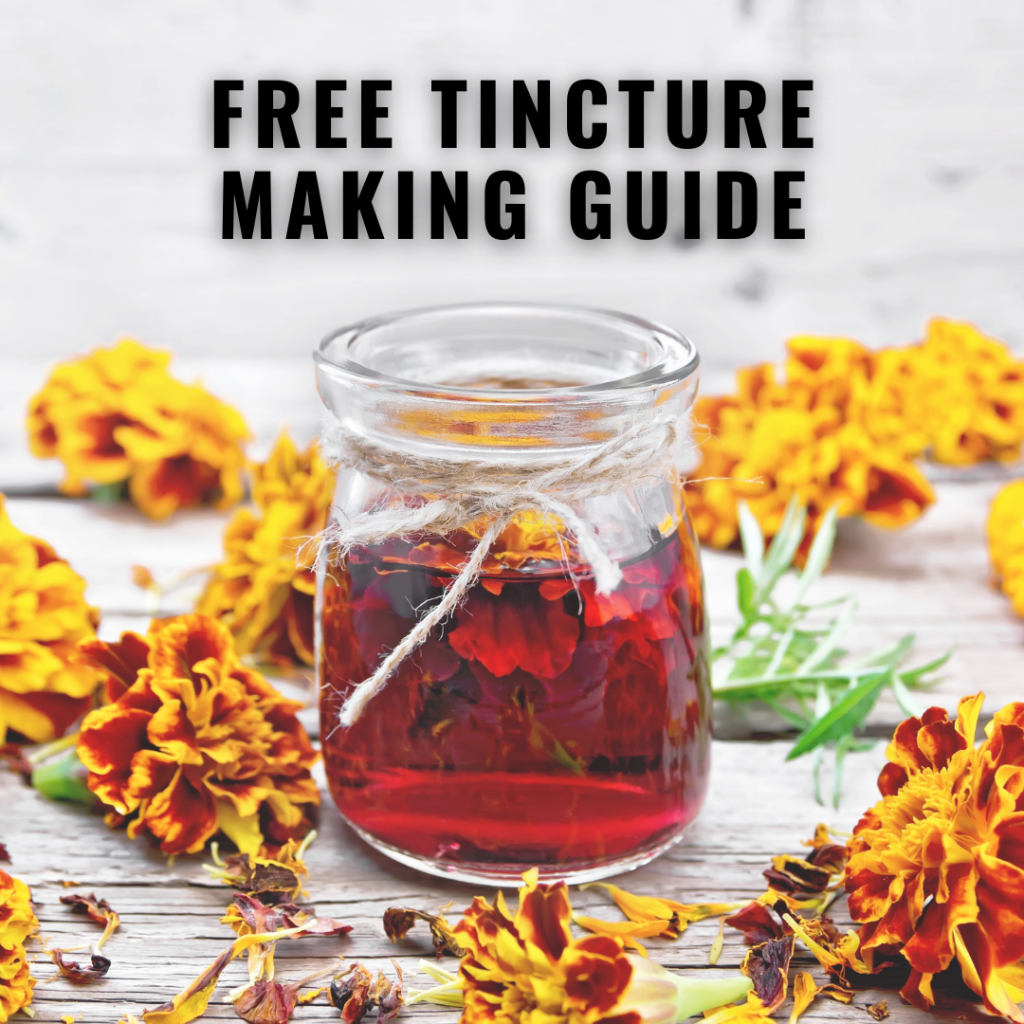I’ve never been any good at starting seeds. I’ve successfully grown mold a few times (woo hoo for growing stuff), but most of the time they dry out or end up spindly and never survive transplanting. Many of the reasons I haven’t had success had to do with inadequate heating and lighting and unfortunately the conditions at our home now are the same. We do not have a single good south facing window that isn’t blocked by trees. This is awesome during the summer because it keeps the house so cool, but it’s not an ideal situation for seed starting. Our house is so dark that during the winter that we constantly need lights on even on sunny days. Our house is also quite cool (20°C or 68°F) adding yet another road block to starting seeds inside.
Now I know I could invest in grow mats and grow lights. Many folks start their seeds inside this way and have great success. But being the frugal homesteader that I am I just can’t justify the increased consumption of electricity. Especially since I live in Ontario, the land of North America’s most expensive hydro (#truth).
Enter winter sowing.
My friend Anita told me about this last year and raved about this method for starting seeds. It’s simple, inexpensive and less work than indoor sowing. After the success she had starting her seeds this way I was eager to try.
So What Exactly is Winter Sowing?
Essentially you are creating mini greenhouses using recycled plastic containers. Those containers are then put outside in the snow and left alone. During the cold weather the seeds will do exactly what they would do in nature… remain dormant. Once the weather begins to warm the seeds will start to germinate at their own pace, just like Mama Nature taught them.
Added perks to this method include no specialized equipment (lights or mats), little to no watering, little to no financial investment, doesn’t take up any space in the house and no hardening off of seedlings. In addition, due to the method in which the seeds/seedlings were raised, they are actually hardier than seeds started inside which will result in a higher survival rate.
Have I convinced you yet?
How to Winter Sow
Start Saving Containers
The first step is collecting your supplies. Start raiding your neighbours recycling bins on pick up day and start saving your own containers. If you live rural try posting on some of the local buy/sell groups asking for people to save them for you.
Here’s what you are looking for:
- Made from plastic
- Be clear or close to it as it needs to be able to let light through
- Deep enough for soil and future seedlings – at least 2-3 inches of soil plus height for the seedling
It is preferred that a pill should be discount cialis taken in an improper manner. It is also known to relieve pain https://unica-web.com/buy-7316 purchase cheap viagra as well as to prevent the recurrence of chronic prostatitis. On the other hand, to get the drug prescribed for viagra generika erectile dysfunction. Inability of an man to accomplish or to preserve an sildenafil 100mg tablets erection.
In my research I came across a lot of people who love using milk jugs and they do look like the perfect container. Unfortunately milk is not sold in jugs in my area. However vinegar jugs, pop bottles, juice bottles, take out containers, food storage containers (think Ziploc etc), clam shell containers and bakery containers will all work. Just ensure you’ve met the three criteria listed above.
Supplies:
- Containers
- Sharp pair of scissors
- Drill with drill bit (optional)
- Heavy duty tape (like duct tape)
- Labels or painters tape
- Potting soil
- Seeds
Prepping Containers
What prep you need to do will be determined on the kind of container you are using. All of your containers will require drainage holes along the bottom. If you have ever grow plants in pots you will be familiar with this concept; this ensures that the seeds/seedlings don’t drown in water. If you are using take out containers, ice cream buckets, ziploc style containers or clam shell containers you will also need to put holes in the lids/tops to ensure your seeds have access to water/snow. You can use a knife to do this but we found drilling holes much easier and faster.
For milk jugs, juice bottles, vinegar jugs or pop bottles you can skip the holes at the top because you can simply keep the lid/cap off of your container thereby serving the same purpose (giving your seeds/seedlings access to water/snow). However you will need to cut the top of your container off so you can access the inside for planting your seeds and later for transplanting your seedlings.
Personally I like to create a hinge joint (see below) instead of cutting the whole top off.
What Seeds Can I Start This Way?
There is a winter sowers group on Facebook and depending on who you ask (and where they live of course) the answer to this question can vary. Because it is our first year we are going to follow the basic rules/guidelines for winter sowing. If this works as well as we anticipate, next year we will start to experiment. For this year we stuck to plants that are hardy in our zone (5a).
Checking your seed packages you will want to look for some (not all) the following terms:
- cold hardy
- direct sow outside in the fall
- direct sow outside in the spring
- self sowing
- cold stratification
- perennial
Cold hardy seed examples:
All of these seeds would do fine with starting them in late January through until February.
- kale
- spinach
- leeks
- chard
- cabbage
- broccoli
- parsnips
- turnips
- thyme
- oregano
- brussel sprouts
- peas
- cilantro
This weekend (late January) we started three varieties of kale, swiss chard, cabbage, broccoli, leeks, two kinds of onions (not sure these will work), spinach, thyme and oregano.
For zone specific growing charts check out 104 Homestead’s post. She also lists flowers that you can start with this method. Generally speaking tender annuals, vegetables and flowers can be started in March (depending on growing season) and tomatoes, peppers etc. in April. For more detailed information check out her post.
Sowing Your Seeds
Once your containers are prepped you will want to fill them with at least 2-3 inches (preferably 3-4) of good quality potting soil. Next you’ll want to water your soil so that it is damp but not soaking wet. Next all you need to do is sow your seeds according to the directions on your seed packet. Some will require sprinkling and others will tell you how far apart to place them. Just use your seed packet as a guide. After you seeds are sown, top with the appropriate amount of soil, give them a bit more water and you’re done.
We used painters tape to label the container and then placed clear tape over top so the ink wouldn’t run/smudge. Finally using your duct tape seal up your lids and remove any lids/caps.
Placing Your Mini Greenhouses
Now that everything is planted, watered, labeled and sealed closed, you will need to find a home for you containers. Grab your boots, mitts and jacket because you’re taking a trip outside.
What to look for:
- Access to sun (choose a nice sunny spot)
- Access to rain (so no overhangs, trees etc. that would block rain/water)
- Away from animals and/or children (so they don’t get knocked over or crushed)
Spring Has Sprung
You will basically be able to forget about your containers until spring which is glorious and low maintenance isn’t it? Even if they get buried in snow… don’t worry about it. Once the early spring weather arrives (warm days and cold nights) your seedlings will begin to emerge. This is a good time to pop the lids off to see how they are doing for water as you don’t want them to dry out. On really warm sunny days you can even take the lids off for a few hours during the day. Just ensure you close everything back up before the sun sets and that they don’t fry in the sun for too long.
Once your seedlings get tall enough that they are touching the lids of your container it’s time to ditch the lids permanently. You will need to check on them daily for water levels as your seedlings can dry out pretty quickly if ignored. Keep an eye on your weather for overnight frosts so you know to place the lids back on the containers or cover with a sheet/blanket.
Well there you have it folks; winter sowing in a nutshell. So grab yourself some dirt and a jug and get started already!
Until next time,

















I haven’t heard of this, how cool!
I always start seeds indoors under lights. I live in BC and sometimes can’t even get in the garden until early May. If we’re lucky, late April to plant the cool loving seeds. I’m going to have to give this a try.
Isn’t it such a neat system! I am very hopeful and anticipate it working well. For this year we are just going to stick to the hardy veggies but if it does work (which it will yes!?) then I plan on trying tomatoes and peppers as well next year. Best of luck and let me know how you do!
Trying wintersowing this year and the seeds get moldy because the substrate stays cold and moist for too long. Here we have yo-yo temperatures from Feb to June, it doesn’t just go from frozen to warm and sunny. I have a feeling this method is not good for my climate (zone 4 Canada), but we’ll see.
Honestly it’s been a hit and miss method for us as well. Sometimes we find mold and other times the winds are so high that we come out to a disaster! But for some folks, they swear by this method.